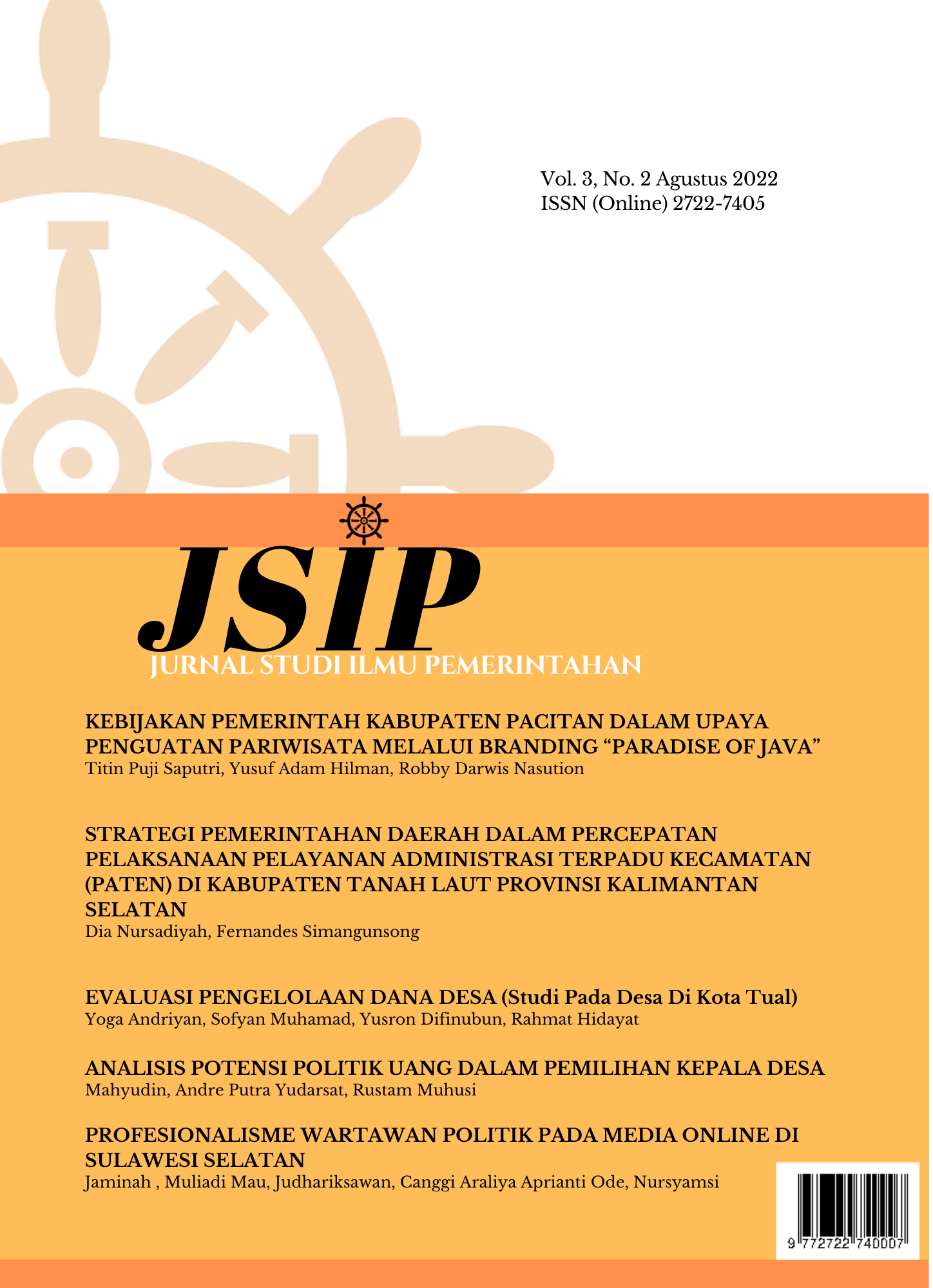KEBIJAKAN PEMERINTAH KABUPATEN PACITAN DALAM UPAYA PENGUATAN PARIWISATA MELALUI BRANDING “PARADISE OF JAVA”
DOI:
https://doi.org/10.35326/jsip.v3i2.2530Keywords:
Implementation, Policy, Paradise of Java, TouristAbstract
This study aims to find out how the Pacitan Regency Policy is, so the purpose of this study is to find out Pacitan Regency's Policy in realizing paradise of Java. This type of research is descriptive research aimed at describing what has been and is in effect. In addition, descriptive research is also a problem-solving procedure that is investigated by moving, describing the wealth of subjects, research objects (individuals, community institutions and others) currently based on visible facts. The results of this study are the implementation of the policy of the Tourism, Culture, Youth and Sports Department in realizing paradise of java in Pacitan Regency has been carried out through synergy with the Regent through the regent's decision on November 9 2018. This strategy is the task and function of all fields, in the field of culture, development, tourism promotion. because the Department of Tourism, Culture, Youth and Sports is an integral part of promoting Pacitan tourism through Paradise of Java. Policy implementation is a synergy and cooperation between stakeholders in Pacitan Regency starting from tourism business actors, hotels.













